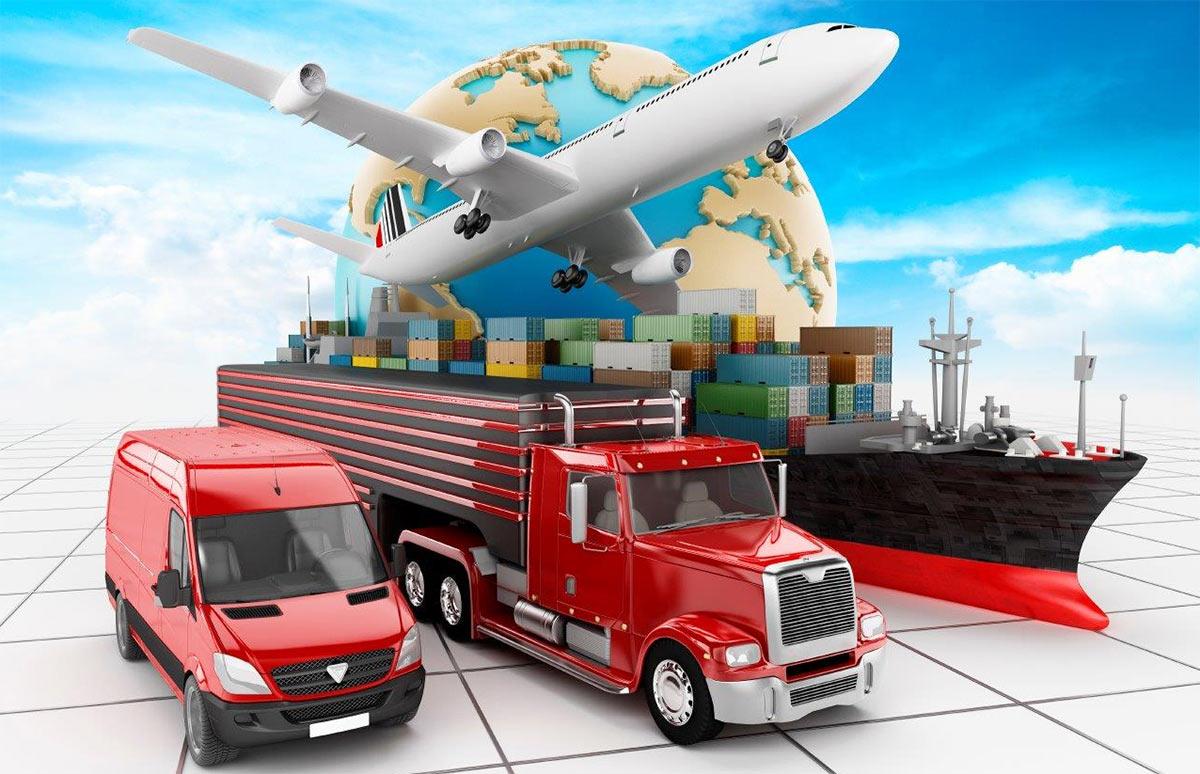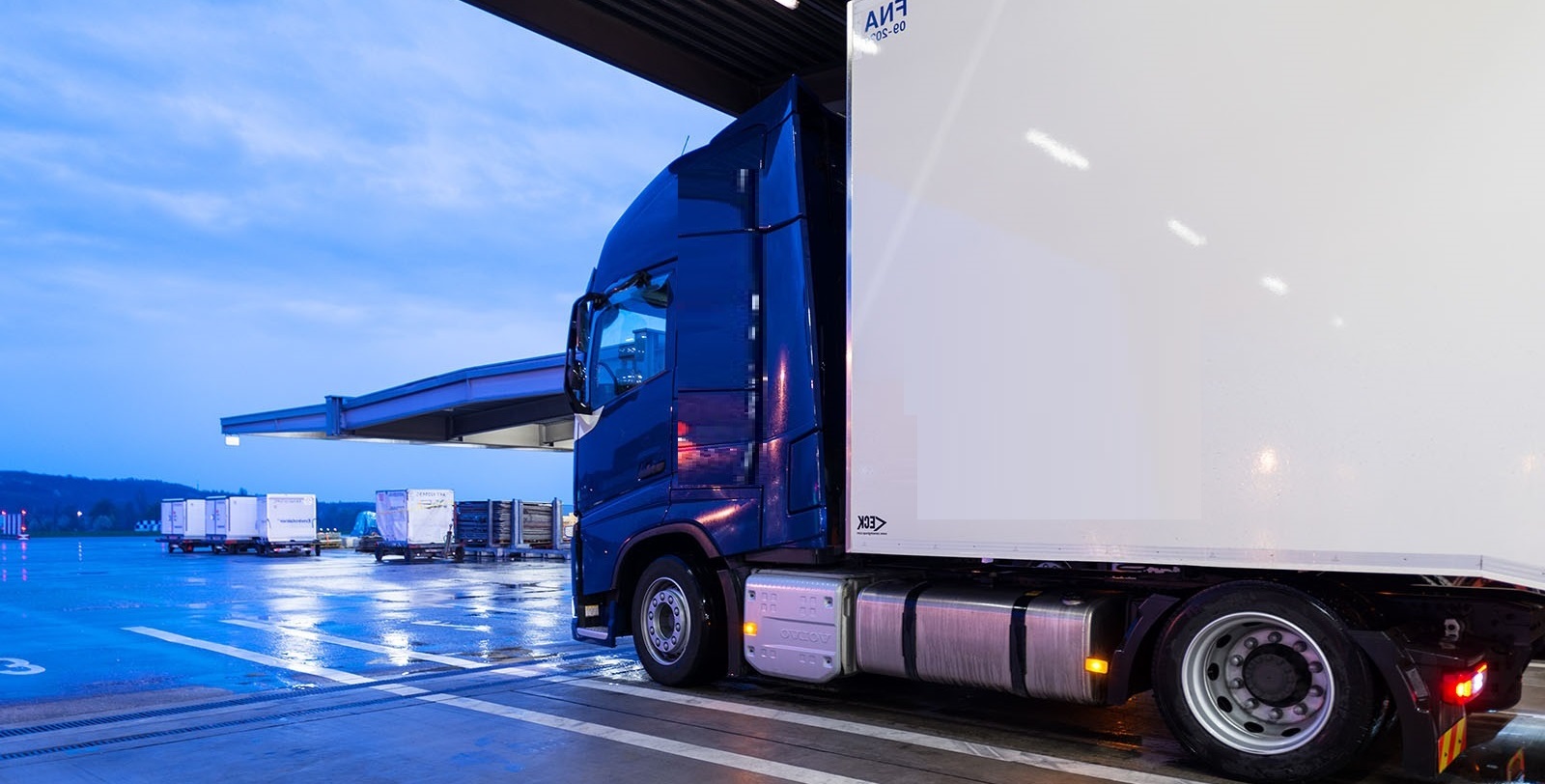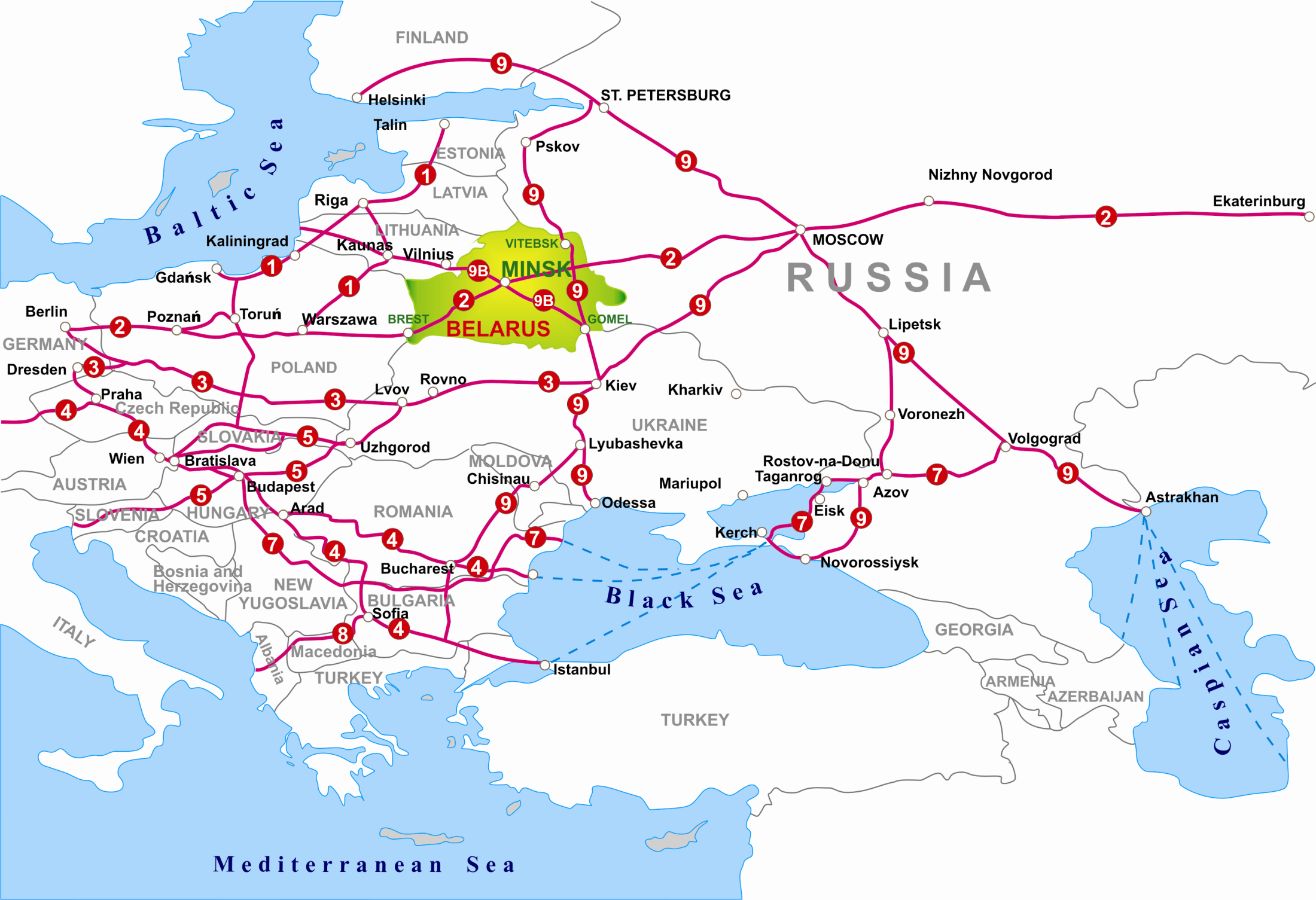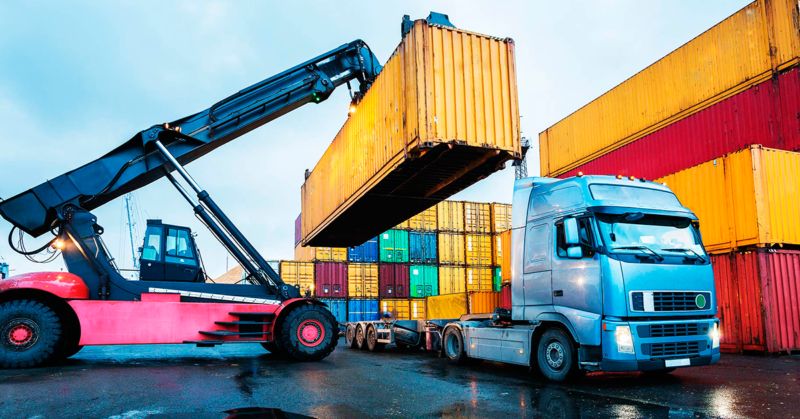How to: deliver goods from europe to russia by automobile vehicle
Despite the far from always cloudless political relations between Russia and Europe, economic cooperation has never stopped. That's why cargo transportation is still one of the key activities, efficiency of which affects a lot - from safety of goods to their cost and promptness of their receipt by the end consumer.
We should be surprised at the relevance of the question of how exactly shipping is done and what types of shipping are particularly interesting and profitable for the parties involved. We should not be surprised at the relevance of the question of how exactly shipping is done and what types of shipping are particularly interesting and profitable.
Оглавление
Types of transportation of goods from Europe

International delivery of goods from Europe to Russia has one distinct peculiarity: transportation from almost any country in EU (most of European countries are in the EU) does not require passing more than 1 or 2 customs borders.
ImportantA striking benefit is that the infrastructure in most European countries is brilliant.
As a result, we have high promptness in delivery with serious simplification of the logistics. It is not to forget about one important detail – the opportunity to use any transport, be it by air, by railway, by road or by sea. Each one of these types of transport are worth mentioning in detail.
Air transport
The most striking benefit – high speed of delivery. But there is no way to use air transport often, unluckily.
However, it is very easily explained – the costs of the air transportations are respectively high and the restrictions in weight of the goods are also very demeaning. Consequently, air transport is used in cases when there is a necessity to deliver particularly precious goods.
Railway transport
Railway is a popular means of transportation. The advantages are: respectively high delivery speed (3-5 days to 2 weeks), intricate railway infrastructure, clear schedule, no weight or other restrictions.
Sea transport
Sea transport is the cheapest way of transportation. Its benefit is that in Russia and Europe there are many harbors.
This fact is key to planning effective routes of delivery. But these means of transport also have a very serious disadvantage – its delivery is very lengthy in time and there is no way to deliver the goods straight to the consumer – we need to use other transport.
Road transport
Similar to railway transport, road transport is one of the most popular means of delivery.
Automobile vehicles are convenient, adaptive, grant high speeds of delivery with reasonable expenses. This means of transportation provides the customer with a way to deliver their goods straight to them – from logistic centers to local shops or even individual consumer.
Transportation of goods from Europe to Russia by road transport

All the information stated above shows why the transportation of goods by road transport is so incredibly popular. Therefore, it is worth to dwell on the features of such transportation method in more detail. Knowing nuances about this delivery method will help avoid any mistakes in organizing cargo transportation. The most important details that need to be observed when transporting goods from Europe to Russia are the following:
- Strict and clear legal control after road transport. Nowadays, three basic international documents are in force - the Geneva Convention, the TIR Convention and the AGR Agreement. Any transportation company must follow their requirements.
- Necessity of competent customs clearance. This feature is clear and obvious – after all, the cargo transportation surely will cross at least one governmental boarder.
- Aside from customs documentation, other accompanying documents are required: for the driver (driver's license, passport, travel certificate, etc.), for the vehicle (TCP, maintenance certificate, registration documentation, etc.) and for the cargo (consignment note, invoice - invoice, CMR waybill, etc.). The specific list of documents is determined depending on the characteristics of the truck and the transported goods.
- Differences in law systems of the EU and other European countries that are not in the EU. Such legal nuances must be taken into account in order to avoid problems with the passage of borders along the route.
- The requirements are stricter and more controlled than they are in Russia. By many features, European transportation standards are stricter than Russian ones. For example, a truck transporting goods in Europe must comply with the EURO 3 environmental standard. The situation is the same with sizes of trains or vehicles. Requirements for the cargo are determined by its specifics. Transportation of pharmaceuticals or foodstuffs are particularly stringent.
The list of details on transportation of goods from Europe to Russia by road is far from complete.
But the information provided is enough to understand that the effective and professional conduct of this type of activity requires an extremely serious approach - both organizational and legal. It is important to mention a few more significant points.
Delivery routes from various countries through the Ukraine and Belarus
Studying the map of the Europe shows that the shortest transportation route from Europe to Russia passes either through the Ukraine or Belarus. The correct use of this international route allows us to deliver goods from Germany or France in less than a week. The delivery period from Poland or Czech Republic is even shorter – only 3-5 days.
Until recently, routes passing through Belarus were quite popular. The reason for that is the volume of traffic to Russia through Ukraine that has been massively declining since 2012. The events of 2014 further exacerbated such trends.

The faster volume of road transportation through the Ukraine fell, the faster the traffic through the neighboring state grew, especially after the sanctions against Russia in 2014 and so on. Belarus became a kind of mediator between Europe and Russia, through which even the formally prohibited goods passed through. Even more so it was possible because of the existence of the Union State of Russia and Belarus.
But today, transportation by road by this route also entails quite serious risks. These risks are a follow-up to the fact that from the second half of 2020 international sanctions are being introduced against Belarus itself. It is quite hard to predict the further development of the events, given the recent forced landing of a passenger plane. However, it will be foolish to ignore the overall political situation that is far from perfect.
For example, one of the obvious consequences was a sharp increase in multimodal container transportation, including groupage cargo by several means of transport. Most often it is a combination of marine and automotive.
In this case, it is not necessary to include either Ukraine or Belarus in the route, which at once removes a number of political problems (with the exception of EU sanctions against Russia itself). The detailed features of such deliveries are descripted in the articles below.
Delivery fees
There is no need to talk about universal transportation fees from Europe to Russia. Shipping costs vary widely. The main factors affecting the transport costs are the following:
- Route distance. This is the most obvious parameter that determines not only the delivery speed, but also the cost.
- Product characteristics: the main one is the mass. But dimensions, density and, most importantly, storage conditions are also of great significance. Obviously, the use of refrigerated trucks is required to transport perishable goods or medical products. The tariff for refrigerated transportation is noticeably higher than for a conventional wagon.
- Features of the vehicle. Different types of trucks (for example, a new or old vehicle of different carrying capacity and efficiency) cost differently, which is quite understandable and does not require additional explanation.
- Other nuances of transportation. For example, forming a groupage cargo significantly reduces the shipping costs. Another instance is the multimodal transportation, which takes into account complications of the logistics, but it also allows to reduce the duration and the costs of delivery.
The list of affecting factors is far from over. Respected transport companies determine their transportation costs individually, taking into account the specifics of a specific delivery. Approximate fees for the delivery of goods to a warehouse in Moscow are shown in the table below, although they may differ for different market participants:
| Country of shipment | Separate euro truck, tent 82-92 m3 | As part of groupage cargo | |||
|---|---|---|---|---|---|
| Delivery period, days | Costs, euros | Delivery period, days | Costs, euros for m3 | ||
| Germany | |||||
| Berlin | 4 | 2100 | 12-14 | 150 | |
| Hamburg | 4 | 2200 | 12-14 | 150 | |
| Munich | 4 | 2400 | 12-14 | 150 | |
| Dusseldorf | 4 | 2200 | 12-14 | 150 | |
| Spain | |||||
| Madrid | 7-10 | 4500 | 12-14 | 200 | |
| Barcelona | 7-10 | 4000 | 12-14 | 200 | |
| Valencia | 7-10 | 4300 | 12-14 | 200 | |
| Murcia | 7-10 | 4500 | 12-14 | 200 | |
| Poland | |||||
| Warsaw | 3 | 1900 | 7 | 150 | |
| Krakow | 3 | 2150 | 7 | 150 | |
| Gdansk | 3 | 2150 | 7 | 150 | |
| Poznan | 3 | 2000 | 7 | 150 | |
| France | |||||
| Paris | 8 | 2900 | 12-14 | 240 | |
| Lyon | 8 | 3450 | 12-14 | 240 | |
| Toulouse | 8 | 3850 | 12-14 | 240 | |
| Nantes | 8 | 3350 | 12-14 | 240 | |
| Belgium (Brussel) | 5-6 | 3400 | 10-14 | 190 | |
| Turkey (Istanbul) | 5-6 | 5600 | 10-14 | 240 | |
| Czech Republic (South) | 4 | 2250 | 10-12 | 170 | |
| Czech Republic (North) | 4 | 2100 | 10-12 | 170 | |
| Finland (Helsinki) | 3 | 1500 | 10-12 | 140 | |
| Holland (Amsterdam) | 4 | 3400 | 10-12 | 190 | |
| Italy (North) | 7 | 3500 | 12-14 | 220 | |
| England (London) | 6 | 3950 | 14-16 | 320 | |
Concentration and transshipment points
The desire to increase the speed and reduce the cost of transportation has led to the emergence of logistics centers. With some degree of conditionality, they divide into two types. The first is the so-called concentration points. Their purpose is to form a combined cargo. In other words, it is a place where a truck or road train is waiting for filling.
If the owner of the goods does not need an urgent delivery, and it is much more important to minimize costs, the cargo usually stores at the concentration point for a long time. Therefore, the creation of optimal storage conditions is of particular importance.
The second category of objects is transshipment centers. In this case, we usually talk about the reloading of goods from one type of transport to another, for example, from automobile to marine, which is very common in practice. Therefore, the main transshipment centers are located either in the ports or near them. It is crucial to understand that logistics facilities almost always combine both of the functions described above.
It is through them that the largest-scale cargo flows pass in today's conditions. It happens because transport companies strive to minimize their costs and become more competitive in the market, offering more favorable tariffs to potential customers.
Container transportation by sea and road transport

As noted above, one of the most popular types of transportation has become multimodal and using two types of transport – road and sea. The main advantage of this combination is the ability to build optimal routes. They are out of the risks of aggravation of the political situation in a transit country, for example, Belarus or Ukraine. As you can see, the use of containers is also an additional and significant advantage. Thanks to this, several benefits are achieved, among them:
- Reduction of the costs of loading and unloading operations while accelerating their speed. It achieves due to the convenient shape of the container and the use of powerful lifting mechanisms. It is essential for multimodal transportation through two or three transshipment centers.
- Optimal logistics. The combination of road and sea transport removes almost all restrictions on the construction of routes. It is due to the geographical location of Europe and Russia. Another significant plus is that it is necessary to cross only one border between the EU and the Russian Federation, which minimizes the volume of customs documents processed.
- There is the convenience of forming combined loads. Today, standard sea containers of various sizes and functional purposes use for transportation. It allows you to choose the appropriate dimensions for all types of goods.
- There is the placing usability of combined loads. Today, standard sea containers of various sizes and functional purposes use for transportation. It allows choosing the appropriate dimensions for all types of goods.
- Versatility. Different types of containers allow you to transport almost all sorts of cargo.
- Guarantee of safety and ease of control. Metal enclosing structures of the container reliably protect the contents from any external influences.
- Durability. Another reserve for saving transport costs is the possibility of using the container for several years. It explains the easy but solid and reliable design of this type of container.
- Such an impressive list of advantages is the best explanation for the popularity of multimodal container transportation by road and sea. There is no doubt that this type of delivery will become even more popular in the next few years.
Features of transportation of combined cargo

A significant addition to the method of transportation described above is such as a delivery format as a combined cargo.
It is the transportation of goods of several owners in one container or truck. The cargo formed at the points of concentration. And the delivery time depends on the speed of filling the container. So, the main advantages of this approach to the organization of cargo transportation are:
- A noticeable reduction in transport costs. It achieves by the cost of container transportation distributing among several cargo owners;
- Convenient logistics. Combined cargo transported by containers is the best option for multimodal transportation with all the resulting advantages described in the previous section;
- The possibility of transporting small-sized goods in small batches or even individually. An obvious plus that does not require comments;
- Guarantees from the transport company. They are supplemented by the possibility of obtaining related services, for example, customs clearance.
Nowadays the combined cargo transportation has become profitable – both financially and speed-alternative to postal delivery. An obligatory condition for the full use of these advantages is an appeal to a good transport or logistics company.
Conclusions
To sum up transportation of goods from Europe to Moscow by road is rightly one of the most popular delivery methods. Because of a combination of a reasonable amount of associated costs and a high speed of transportation. Moreover, multimodal transportation of combined cargo using two types of transport – road and sea – is particularly profitable.




